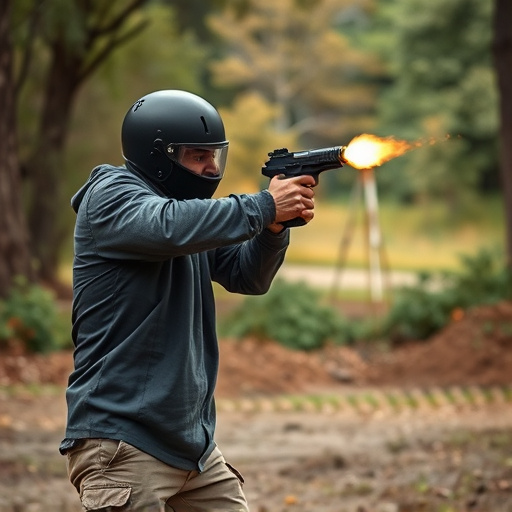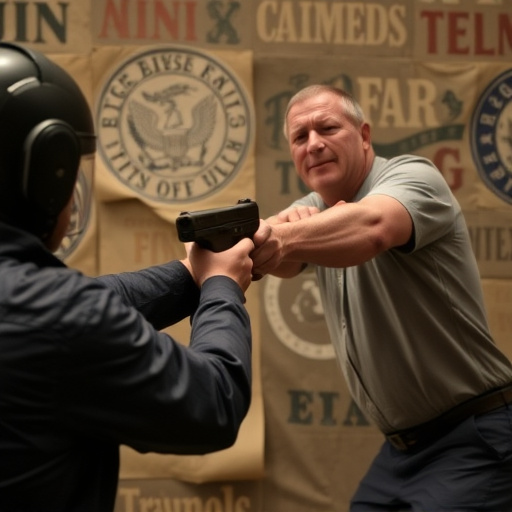Tasers and stun guns offer different methods of self-defense, with stun guns delivering localized shocks for immediate pain and muscle paralysis, while Tasers use electrical pulses to disable multiple attackers at once. Stun guns are easier to use and more compact, suitable for quick protection, but Tasers provide longer range and precise control, ideal for higher-risk situations. Choosing between them depends on personal needs and local laws; both can be considered the best self-defense stun gun for women depending on individual circumstances.
“Uncover the distinct differences between Tasers and stun guns, two powerful tools in personal defense arsenal. This comprehensive guide aims to empower individuals, especially women seeking effective self-defense solutions. We’ll explore key distinctions in functionality, impact, and legal considerations. Discover which weapon might be the best self-defense stun gun for women, considering its unique features and legal aspects. Ensure you make an informed choice for your safety.”
- Understanding Tasers and Stun Guns: Unraveling the Key Differences
- Self-Defense Considerations: Which Weapon is Best for Women?
- Features and Legal Aspects: Making an Informed Choice
Understanding Tasers and Stun Guns: Unraveling the Key Differences

Tasers and stun guns are both popular choices for personal protection, but they serve distinct purposes. Tasers, officially known as Conductivity Energy Devices (CEDs), use electrical pulses to disrupt muscle control in their target, temporarily incapacitating them. They’re designed to be non-lethal and often used by law enforcement for crowd control or to subdue resistant individuals.
Stun guns, on the other hand, emit a strong electric shock that can cause severe pain and temporary paralysis. Unlike tasers, stun guns are considered lethal weapons in many jurisdictions due to their potential to cause serious harm or even death if used incorrectly. For women seeking effective self-defense tools, a stun gun might be the better choice for its high visible deterrent value and ease of use. However, understanding the specific capabilities and limitations of each device is crucial before making a decision, especially when considering the best self-defense stun gun for women.
Self-Defense Considerations: Which Weapon is Best for Women?

When it comes to self-defense considerations, particularly for women, choosing the right tool is paramount. In the realm of non-lethal weapons, Tasers and stun guns are two popular options often debated as the best self-defense stun gun for women. Stun guns emit a powerful electric shock, temporarily disabling an attacker, while Tasers use probes to deliver a controlled electrical current, rendering the target immobile. For women considering a personal defense device, understanding these differences is crucial.
Stun guns are generally easier to operate and require less training, making them appealing for those seeking a quick, user-friendly solution. Conversely, Tasers offer a more precise and controlled approach, allowing users to disable an attacker without causing significant harm. In terms of portability, stun guns are often smaller and lighter, making them convenient for everyday carry. However, Tasers may be more suitable for those who want a device that can subdue multiple attackers or those who require a weapon with greater range and power.
Features and Legal Aspects: Making an Informed Choice

When considering self-defense options, both Tasers and stun guns are popular choices, but they have distinct features that set them apart. In terms of functionality, a stun gun delivers an electric shock to temporarily disable an aggressor by affecting their muscles, causing intense pain and disorientation. These devices are typically easy to use, with simple triggers, making them accessible for self-defense purposes. On the other hand, Tasers fire small probes that deliver a powerful electrical current, stunning multiple muscle groups simultaneously. They offer a slightly longer range and can be more effective in certain situations, but their complex mechanism may require more training.
In terms of legal aspects, the use of stun guns is generally more widely accepted and regulated across various jurisdictions. Many areas permit their possession for self-defense without a permit. However, Tasers often have stricter regulations due to their more powerful nature, and their use may be limited to law enforcement and those with proper training and licensing. For women seeking the best self-defense stun gun, understanding these differences is crucial in making an informed choice that aligns with local laws while ensuring personal safety.
In navigating the self-defense market, understanding the subtle yet significant differences between Tasers and stun guns is crucial. For women seeking the best option, considering specific needs and legal frameworks is essential. While Tasers offer a range of settings, stun guns provide close-quarters impact. In terms of effectiveness for personal safety, especially for women, a stun gun might be the superior choice due to its direct impact and availability. However, the ideal weapon depends on individual circumstances and local regulations. As you make an informed decision, remember that both tools can serve as powerful deterrents when used responsibly.
